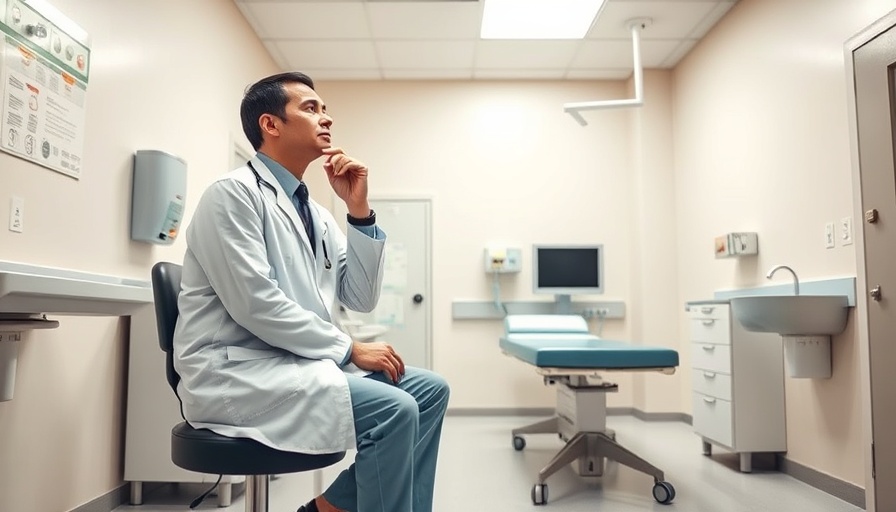
Projected Surge in Uninsured: A Local Crisis Unfolding
In the heart of South Texas, the impending surge in uninsured residents casts a daunting shadow over the healthcare system. Chris Casso, a dedicated family medicine physician in McAllen, Texas, cannot help but voice her concerns about the dwindling resources to serve a population that already struggles for access. As hospitals and clinics come under increasing pressure, the ripple effects are felt across communities, especially in the Rio Grande Valley where poverty is prevalent and health insurance coverage is scarce.
The Struggling Health Systems of the Rio Grande Valley
Tucked away in Starr County, a region with some of the highest uninsured rates in the United States, healthcare providers are grappling with an increased influx of patients. Dr. Jake Margo Jr. reflects on the challenges at Starr County Memorial Hospital, where space is limited, and triaging patients has become a daily battle. The emergency room is overcrowded, and the demand for care outstrips the supply by a startling margin. For many, a visit to the ER is the only option.
The Impact of National Health Policy Changes
The prospect of losing health coverage for millions looms large as recent national policy changes unfold. The anticipated elimination of enhanced subsidies, part of legislation labeled the One Big Beautiful Bill Act by its proponents, threatens to further exacerbate the situation. It is estimated that over 14 million Americans might find themselves uninsured in the next decade. This devastating statistic does not just impact individuals; it reverberates through entire communities, leading to strained resources and closures of vital healthcare services.
The Human Side of Healthcare: Stories from Affected Communities
Local doctors are sounding the alarm, emphasizing that the healthcare system cannot sustain such pressures. Joseph Alpert, an influential voice in the medical community, warns that the inability to cover costs for uninsured patients will lead to closures of clinics and hospitals, impairing access to necessary healthcare. The emotional toll on both providers and patients is immeasurable, as healthcare becomes out of reach for those who need it the most. Without intervention, the future of rural healthcare could be bleak.
Beyond the Statistics: The Personal Impact
Communities are not just numbers on a chart—they are made of individuals with hopes, dreams, and health needs. As healthcare becomes increasingly inaccessible, many residents face difficult choices each day. For the working-class families in South Texas, the threat of unexpected medical issues looms larger than ever.
Wellness Strategies for Those Affected
In light of these challenges, it is essential to explore daily wellness routines and strategies that could help navigate personal health in an ever-changing landscape. Emphasizing natural health tips, a balanced diet plan, and stress relief strategies may support those relying on dwindling resources. For individuals facing health insurance instability, understanding their options for natural immune support, healthy eating habits, and mental health support can help foster resilience.
A Community-Centric Approach to Change
Taking a holistic approach is vital in combating the impending health crisis. Local initiatives to promote community health and well-being, such as wellness for working professionals and self-care practices, can significantly impact resilience. Building a network of support can help residents take proactive steps towards maintaining their health despite external pressures.
Moving Forward: Steps Towards Health Equity
As we push into the future, community members and leaders must advocate for health equity and ensure that every voice is heard amidst national healthcare reforms. Understanding and sharing the stories of those affected can provide valuable insights into the real challenges facing these communities. Collaboration and innovation in healthcare delivery will be crucial in bridging the gaps as we work towards a healthier and fairer system for all.
Conclusion: Take Action for Community Health
The situation in the Rio Grande Valley serves as a critical reminder of the powerful connection between health policy and local community well-being. By sharing these stories and actively participating in preventive health measures, each of us can contribute to a stronger, healthier community. It is incumbent upon us to stay informed, advocate for access to care, and foster supportive environments that prioritize the health of every individual. Let us take these insights to heart and work collectively towards a better future for our communities.
 Add Element
Add Element  Add Row
Add Row 



Write A Comment